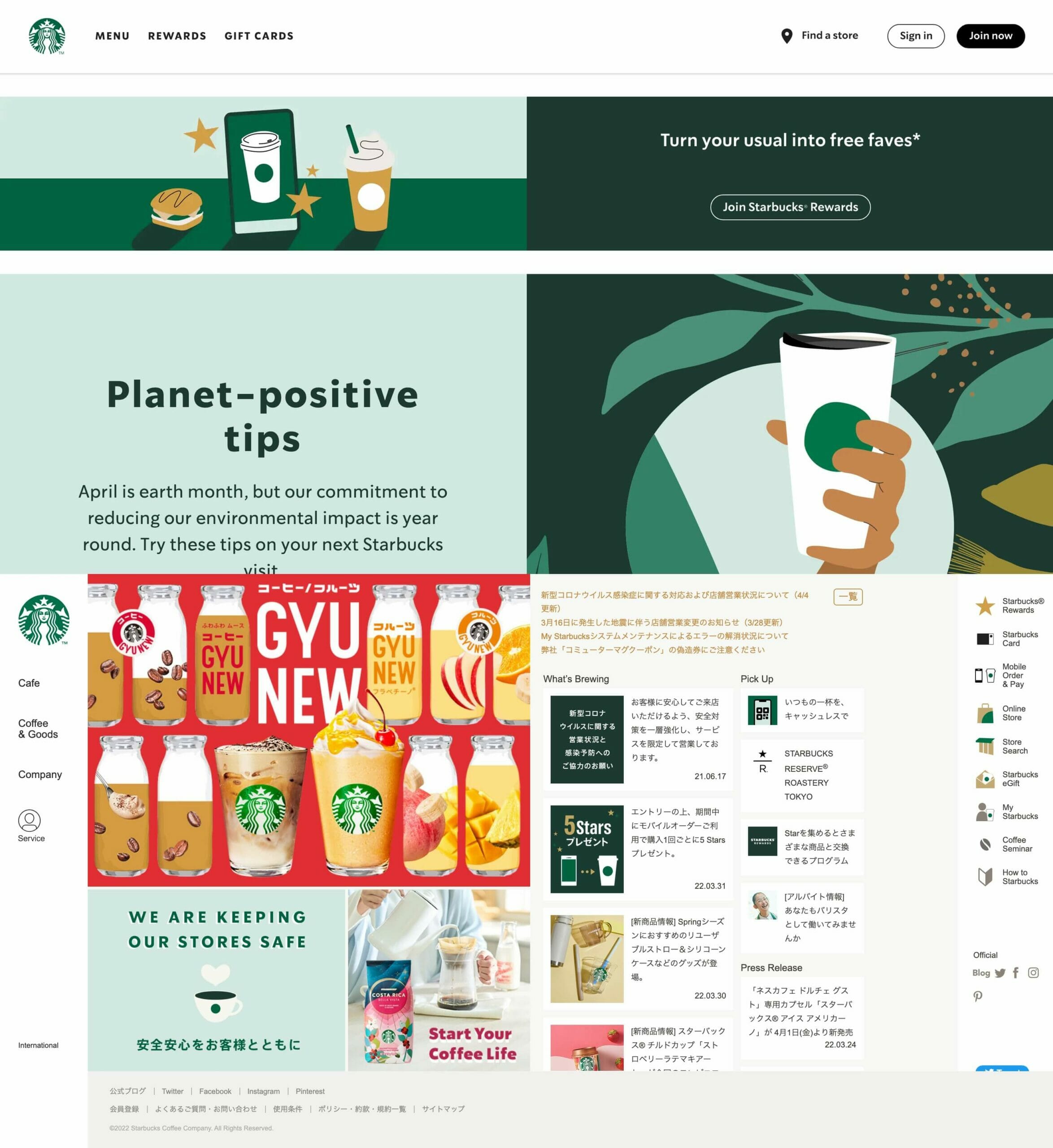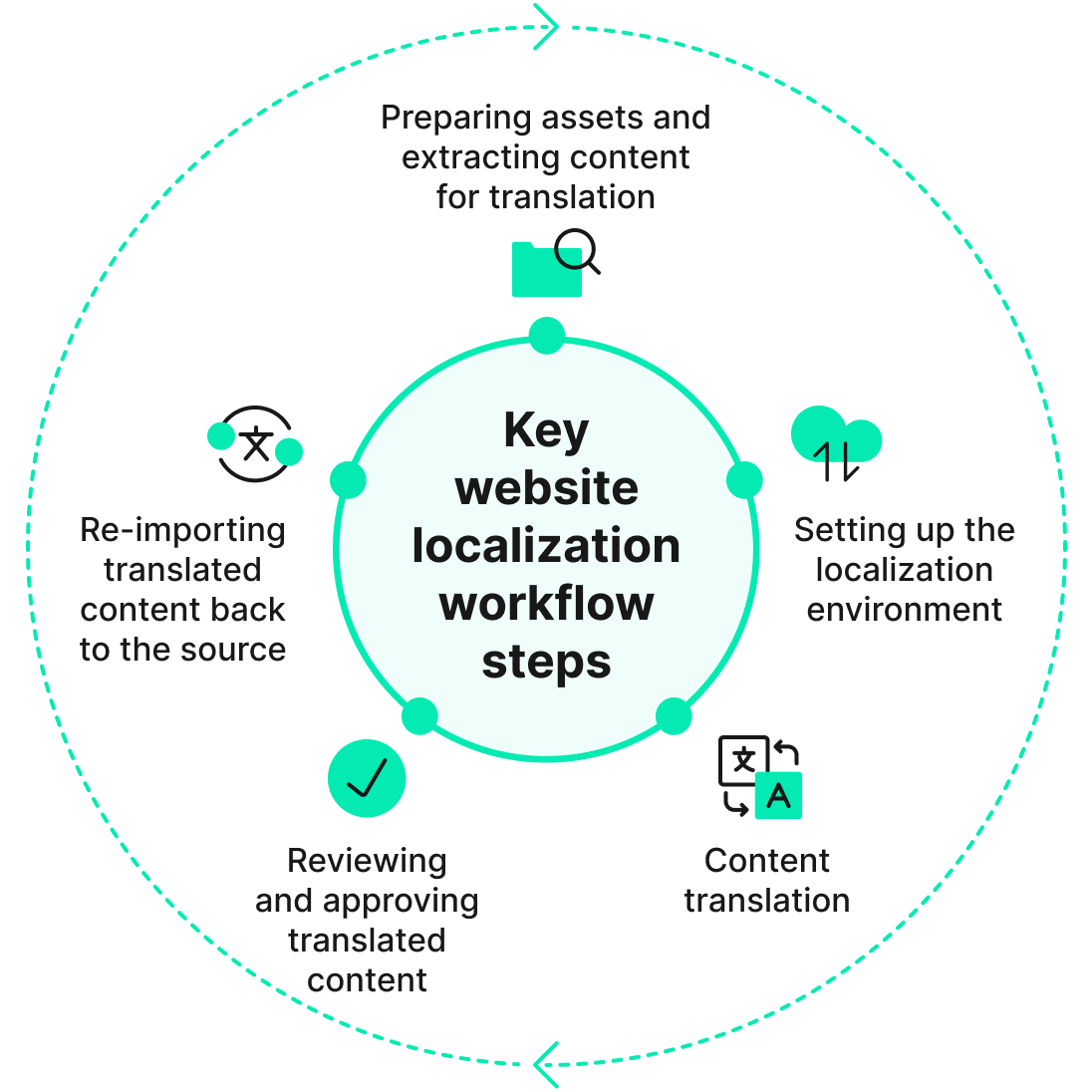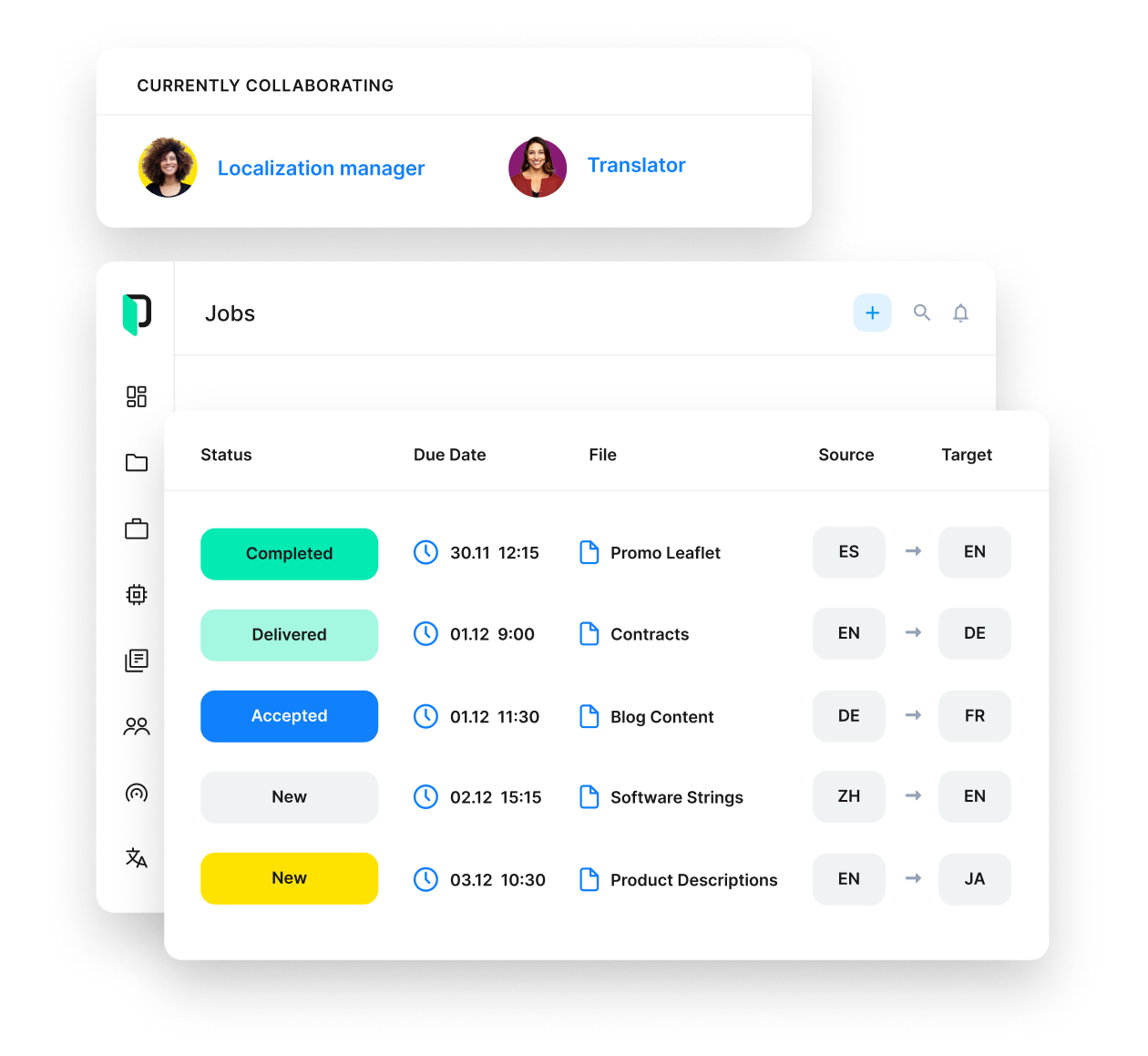Global business
How a Global Website Can Help Grow a Business with the Right Strategy

Few businesses have unlocked global opportunities as skillfully as Airbnb. The hospitality trailblazer has harnessed the potential of a global website from day one to connect with customers across cultures—driving engagement and sales worldwide.
Every business planning global expansion needs a global website to truly thrive. By providing a range of language options, a global website can be a powerful tool for fostering a meaningful connection with audiences in different target markets.
In this guide, we will explore what a global website is and why it’s essential for international business. We will also outline what makes a strong global website strategy so you can create your own international online presence more effectively.
Download for free
Make your website a global hit—one language at a time
There’s a lot that goes into a successful multilingual website launch, so make sure you’re on the right track with this easy-to-follow checklist.
What is a global website?
A global website is an online platform designed to cater to a worldwide audience. It can range from a basic homepage available in multiple languages to a cohesive strategy that connects a network of sites—each catering to a specific language market.
The goal of a global website is to provide a seamless user experience that feels “native” for all visitors, regardless of their location or language preference. For example, Starbucks’ US website may look completely different for visitors in Japan. This is because web designers consider cultural differences when designing global websites—a process known as UX localization.

Benefits of a global website
Creating a global website offers several advantages for businesses on track for international growth:
Expanded market reach
One of the most significant benefits of a global website is expanded market reach. While transcending borders and language barriers, your business can tap into new markets, reaching potential customers you may never encounter otherwise. This opens up opportunities for diversification, ultimately leading to increased revenue streams.
Enhanced credibility
A solid global presence instills confidence in your brand’s credibility and reliability. Businesses with a well-designed global website are perceived as established and trustworthy entities capable of catering to diverse international audiences. This enhanced credibility can influence consumer decisions, increasing conversions and customer loyalty.
Cultural relevance
By tailoring content and user experience to suit different cultures, global websites establish a sense of cultural relevance. This fosters a deeper emotional connection between the brand and its international customers, helping to build long-lasting relationships and brand advocacy.
Search engine visibility
Embracing a multilingual approach can significantly impact a website’s search engine visibility. Through content in multiple languages, global websites can improve their rankings in various language-specific search results, making them more discoverable to users in specific countries.
Competitive advantage
In a competitive business landscape, a well-designed and properly localized global website sets a brand apart from its competitors. In demonstrating a commitment to global engagement and user satisfaction across languages, businesses can gain a competitive edge in different target markets.
3 key strategies for creating, managing, and optimizing a global website
Creating a successful global website is a process with many steps. Still, by breaking it down into manageable pieces, you can create, manage, and optimize website content that genuinely connects with audiences across cultures and languages.
Build a comprehensive global website strategy
A well-executed global website strategy hinges on the ability to strike a chord with visitors from diverse cultural backgrounds. Understanding customer needs, preferences, and behaviors in different target markets plays a key role in tailoring the website content and design to create a more personalized user experience.
Thorough market research, audience analysis, and competitor monitoring will all help you craft a website that goes beyond speaking the language of its users and resonates on a deeper level. Personalization based on cultural understanding fosters a sense of trust and familiarity, encouraging user engagement.
This strategy will guide you in establishing standards for tone, visuals, branding, content requirements, and user interface (UI) design across cultures and languages. Ensure flexibility to accommodate differences in text length, character sets, and other design considerations specific to each target market.
A comprehensive global website strategy considers various global business expansion factors:
- Primary objectives: What are the primary objectives of your global website?
- Business strategy: How does the global website align with your overall business strategy?
- Competitive edge: What will set your global website apart from local competition?
- Target markets: Which markets offer the most growth potential?
- Regulations: How will your global website follow local regulations and legal frameworks?
- Branding and design: What will the global website’s branding and design roadmap be?
- Tech stack: What tools will facilitate global website management?
- Conversion: How will the global website drive lead generation and conversion?
- Performance: How will global website performance be monitored and evaluated?
- Customer service: How will you provide customer support across languages and time zones?
Once you begin addressing these questions, you are ready to start planning your roadmap. An effective launch typically requires a set schedule with rollouts designed for each country or language version.
Often, global websites are first launched in one or two markets with other ones gradually added. This can help with onboarding new processes with your global site and can make site management easier in the early days by allowing your team to focus on one region at a time.
For example, when deciding on the launch sequence, you could consider starting with the US while focusing on the Asia-Pacific (APAC) region as a separate site group launching after a rollout in North America.
Assess smaller markets that align well with your product or market fit and keep growing your global site’s online footprint—these choices will shape your initial global website development and localization roadmap.
Manage website localization and content translation
As mentioned earlier, rolling out a global website isn’t only about replicating your original content in another language. It involves taking into account cultural differences, legal requirements, purchasing habits, payment methods, and many other aspects that organizations need to address to make their global website appealing to international audiences. This process is known as website localization.
What is website localization?
Website localization goes beyond translation, fully adapting your site to the language and culture of diverse target markets. Learn more about how to make it work effectively.
Planning your website localization
After beginning the overall planning of your site, you should start planning your website localization. To begin your website localization journey, consider exploring the following aspects:
- Prioritize languages: Which languages will you prioritize for adapting your website?
- Localization budget: What is your allocated budget for localization and translation?
- Stakeholder management: Which stakeholders will be involved in the localization program?
- Localization ownership: Who will be responsible for owning and managing localization?
- Outsourcing: Will you collaborate with any language service providers, and if so, in what ways?
- Localization technology: What technology will you use for website localization?
- UX design: How will you ensure seamless multilingual UX design for your global website?
- Quality assurance: How will you achieve and maintain quality across languages?
- Version testing: How do you plan to test the localized versions of your website?
- Metrics and tracking: What metrics and KPIs will you use to measure website localization success?
Speaking of success, the basic building block of a website localization program is a well-defined workflow. Localization workflows can vary between companies, but they typically follow a standard pattern.

Preparing assets and extracting website content for translation
The localization workflow begins by preparing and extracting content, ensuring all assets are ready and suitable for localization, and organizing files appropriately for each language in a content repository.
Setting up the website localization environment
From there, the localization environment is set up with modern localization technology, such as a cloud-based translation management system—and translators are assigned to begin translating content, either participating as in-house or external partners. Automated notifications are used to keep everyone updated on project status, deadlines, and additional tasks.
What is a translation management system?
Learn what makes a translation management system and how it helps businesses seeking to expand globally translate content more quickly and efficiently.
Website content translation
A translation management system makes content translation easier. With an intuitive user interface, it allows linguists to work with established computer-assisted translation tools to maintain consistency and accuracy, a context-rich translation editor with UI screenshots helps them avoid design breaks, while machine translation engines speed up the translation of certain content types (e.g., product descriptions). Depending on the project, other tools may be used during this stage to help linguists work more effectively and accurately.
Reviewing and approving website translations
Once content translation is complete, the localization workflow includes an internal review and approval step where multiple stakeholders, such as project managers, designers, developers, and subject matter experts, can review the localized content and provide feedback from one central location.
Re-importing translated website content back to the source
The final step is to reintegrate the content back into the source format, automatically deploying it into the project or production environment, with developers receiving notifications when the process is finished.
By using a strategic focus and systematic approach to website localization, you can rest assured that you launch a global website that effectively resonates with audiences worldwide.

Phrase TMS
The enterprise-ready translation management system
Work with the leading TMS to automate translation workflows with cost control and quality checks.
Optimizing and promoting your global website
With the website localization process moving and improving over time, it’s time to think about how to expand the reach of your global website in the most effective way possible. By utilizing effective promotion tactics, your website can reach more potential customers worldwide—increasing traffic and conversions.
Embracing these promotion tactics will empower your global website to make a meaningful impact across markets:
- Search engine optimization: Conduct keyword research for each of your target markets or languages and implement international SEO to have your website content rank as high as possible in local search engines.
- Thought leadership: Create valuable and engaging content tailored to the interests of your international audience to position your brand as an authority in your industry and gain trust and credibility.
- Social media outreach: Foster connections by sharing your content and engaging in conversations with local audiences through popular social media platforms.
- Influencer partnerships: Partner with industry leaders in target markets to expand your reach and gain credibility.
- International PPC advertising: Drive targeted traffic through pay-per-click campaigns in your target markets.
- Email campaigns: Regularly offer localized content and promotions to subscribers in their preferred language via promotional and educational emails.
- Webinars and online events: Showcase expertise and connect with potential customers across diverse regions.
- Local online directories: Improve visibility by listing your global website in relevant local directories.
Expand internationally with a global website
As you expand your business, launching a global website will help you connect with and engage diverse international audiences. The key to success lies in having a strategic focus and systematic approach to website localization.
Following the best practices outlined in this guide can elevate your global website and drive growth. Each step—from choosing languages and creating multilingual content to providing a great user experience across cultures—brings you closer to your goals.
Last but not least, take a moment to appreciate the efforts, as publishing your global website will be a significant milestone to celebrate in your global expansion journey.





